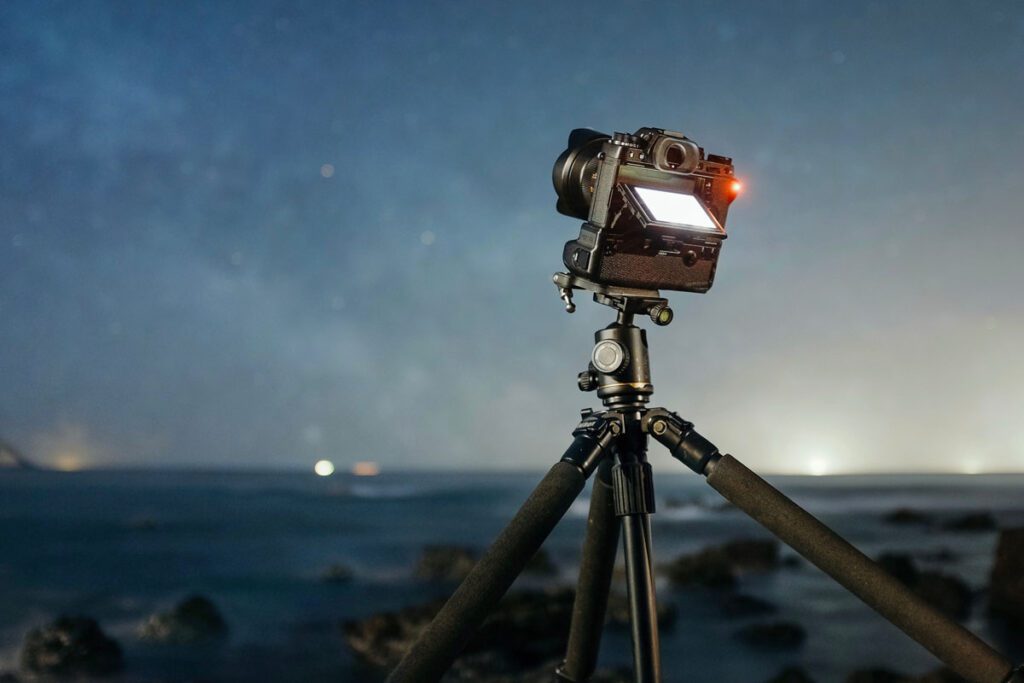- Questions?
- Contact
Using a Tripod

A good tripod is an essential took for a photographer, as it’s important to have a steady surface to be able to shoot from. It will help your images be sharper and allow you more flexibility when shooting in low light situations.
Components of a Tripod
A professional-level tripod is composed of two sections. You have the legs and the head of the tripod. By separating these two items you can customize the tripod for your unique shooting situations. For the legs, they come in aluminum and carbon fiber varieties, with many different lengths. This allows you to purchase a set that fits your budget and your use. If you’re going to be shooting in the field and hiking a lot, then a light-weight carbon fiber set of legs would be better suited than a 60″ aluminum tripod meant for a studio. As far as heads go, there is a myriad of different options including ball heads, 3-way heads, pistol grips, fluid heads, etc. The most common is the 3-way head, which gives you pan/tilt and camera rotation abilities. Most heads also include a quick release system for attaching the camera to the tripod.
Using a Tripod
Using a tripod is a straight-forward process. You need to extend the legs to the correct height and place the camera on the tripod head. But, there are some things to keep in mind:
- When possible, fully separate the legs. This provides a wide, stable platform.
- Always try to get the tripod head level before setting up the camera. Many heads come with a bubble level to help you.
- Fully extend the legs before raising the center column. Raising the column takes away from the stability of the tripod.
- If you’re outdoors in a windy location, use a tripod weight system to help weigh the tripod down.
I don’t have a Tripod
Don’t fret, there are other ways to help you steady the camera while you are shooting.
- Position your body next to a solid object, such as a wall, and use it to steady your body.
- Placing the camera on any flat surface, such as a table, will help stand in for a tripod.
- Using a sandbag for surfaces that are uneven will help you steady the camera.
Finally, don’t forget to turn off image stabilization if you are using a tripod!
Using image stabilization on a tripod will negate the effect and actually cause the images to have a slight shake to them. This is due to how the mechanism works. To be safe, always turn it off when you place the camera on the tripod.
Camera on Tripod by insung yoon on Unsplash
https://unsplash.com/photos/YE08WHn8VYQ

